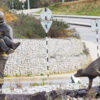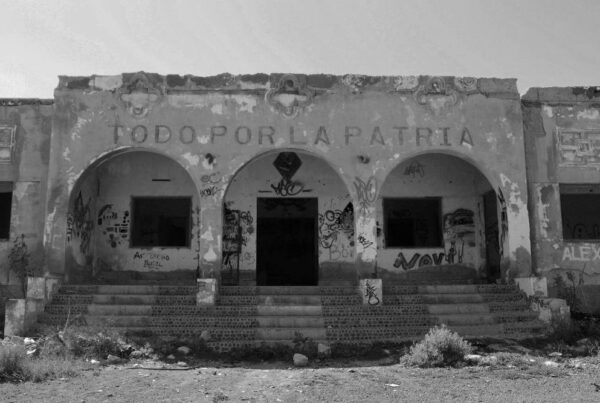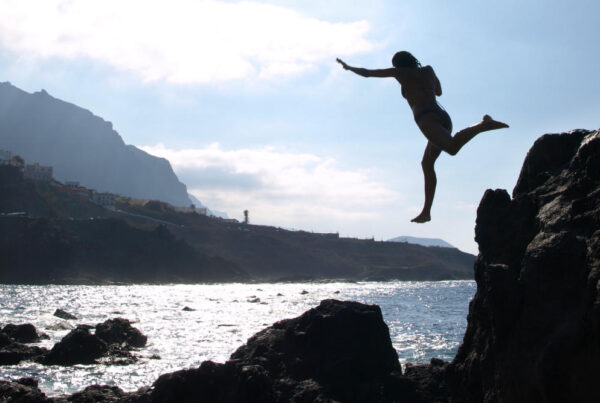“Enjoy your holiday,” smiled our neighbour, knowing fine well the reason we were travelling to the Canary Island of La Palma was for work and because we were creating a walking holiday. It’s something we hear a lot because, on the face of it, that’s exactly what it looks like. One friend, describing what it was we did, told someone, “They get paid to go walking.” That’s technically not inaccurate, but it’s like saying a Cornish fisherman gets paid to go fishing. What was different about our neighbour when he joked about it being a holiday was he’d previously asked what it involved. Not everyone does that.
Thinking about this got me wondering how much people knew about how a walking holiday comes into existence. I’ll use our trip to La Palma to provide an insight into what goes on behind the scenes.
Although there is travel writing involved – a comprehensive guide is created when all the foot work is finished – the logistics and planning are worlds apart from conventional press trips for travel writers. When we used to do these, all travel arrangements were taken care off, we were collected, transported around, taken to restaurants and attractions, on guided walks, and so on. Basically, all we had to do was turn up. Creating a walking holiday involves making almost all the arrangements ourselves. Weeks of planning with colleagues at Inntravel go in to creating a framework, but once we touch down, it’s up to us to mould that into something that is going to make for a great holiday experience.
The job is made easier by the range of tools available – conventional and online maps, such as Google Earth, and apps. But I’ve yet to find one that was 100% reliable when it comes to the reality of hoofing it around pastures new.
Day 1
Arriving late in the day, we didn’t have much to tick off – update the town route we’d put together a few years ago, check out the suitability of a potential overflow hotel, and make sure recommended restaurants were still open following the economic impact not only of the pandemic but the volcanic eruption in 2021. That’s bread-and-butter stuff, but what caused an unexpected problem was Santa Cruz de la Palma’s main carpark was half filled with a funfair erected for carnival. Parking in La Palma’s capital isn’t easy at the best of times since the promenade car park became a beach.
Day 2
We had a long walk ahead, creating a new itinerant leg of the previous La Palma walking holiday because the volcano had chosen to pour its lava right across a section of the old leg. Normally, we’d start from the appropriate hotel but, because we had to tie in with meeting a local guide later in the afternoon, we had to drive from Santa Cruz to the hotel on the southern tip where the route started, which added an hour to the day. Then we dumped our cases and reccied a part of the route by car before setting off on foot. Like I said earlier, no maps are entirely accurate, and the last thing you want to find after a couple of kilometres walking up a steep hill is that there is no onward path. That’s exactly what the recce showed us. Although shown on maps, the path was completely overgrown. Including it would lead to people getting lost. Luckily, we had a back-up plan. But all this meant we didn’t start walking until nearly midday, and there was 15-20km ahead.
Creating a route doesn’t just mean walking it, it involves recording distances, every junction, every signpost, taking photos, noting landmarks, flora and fauna, and points of interest. All of which makes progress slower. This was quite a straightforward route … apart from one thing. Because of improvements to a road layout, workers had removed signposts at key points where the path crossed the road, one sending us a kilometre in the wrong direction. We have a saying for our own walking routes – we get lost so you don’t have to – this is an example of what this refers to.
We arrived at the end of the route, 18.5km later, after 5pm, a time when the person we were supposed to meet was no longer available. As they were due to transport us back to the hotel, this was an issue, especially as there were no taxis. But there was a small bar, so at least somewhere to hang out till we figured out what to do. This isn’t unusual when creating walking routes. I’ve lost count of the times we’ve ended up somewhere there doesn’t seem to be an easy way back to our car. For customers, it doesn’t matter, there will be someone to pick them up. We’re the guinea pigs to make sure of that. We regularly have to figure out how to get back to our starting point when things don’t go to plan. There’s always a way.
Day 3
A far more straightforward day – we had to take notes about a new hotel for the holiday; walk around the San Antonio Volcano to make adjustments to a previous route and amend it to create two new routes, a short and a long version; descend to a lighthouse and salt pans; catch a local bus to make sure it was still running and stopped at a convenient spot for the hotel; and check what dining options were available within walking distance of the hotel.
Day 4
Another standard day, but one where logistics played an important part. First job was to record a new short circular route. This was another case of maps not reflecting reality, but we found a great little unmarked path that did what we needed it to do. As the next stage involved catching a local bus which ran only every two hours, we had to make sure we were back at our start point by a specific time. Then it was a short bus ride to the town of Los Canarios where we ascended into the hills to link up with a previous path to then reroute it to our new end point. That all worked great, but as it was a Sunday, most places were shut by the time we finished, and water supplies were becoming an issue. A local bar/cafe we planned to eat at was discarded for being too authentic. We’ve eaten at many similar places and while they’re fine when there’s little choice, they’re not the sort of joints people on holiday are generally going to appreciate after a long day on the trail, unless they like bright lighting, Formica tabletops, a blaring TV, and people playing table football beside them.
Day 5
First task involved an hour’s driving across the recent lava flow to meet up with a guide who took us on a circuit to the new volcano, a jaunt which ended with us being filmed for the Spanish news. Then it was a visit to Los Llanos to re-walk a town route and update the restaurant recommendations. Finally, we drove back to Santa Cruz to spend the night before an early morning flight to Tenerife. It all went well apart from the damn parking situation in Santa Cruz where we had to park the car half an hour away from the hotel, not ideal when the vehicle was to be returned to the airport before 08:00 the following morning. It’s the little things that often create the most annoying problems.
Day 6
Having moved the car closer to our hotel at 22:00 the previous night, getting to the airport and the short flight to Tenerife North Airport went smoothly. We picked up a car there, drove to the hotel in La Laguna, dropped off our bags, and headed into the Anaga Mountains to try to resolve problems with a walking route which was closed in two sections because of rockfall. One section had a detour which was better than the original path, the other was still closed. But we had enough to work on to create a shorter version of the original route. Then we retraced our steps to a rural bar at our starting point. We arrived back just as a bus took the last walkers out of the valley, leaving us alone with the 87-year-old bar owner who pulled up a seat and spent the next 20mins telling us about his life while we had a drink and a snack.
Job done. ‘Holiday’ over … apart from a night in La Laguna and the drive to Tenerife South Airport the following day for the flight home.




















